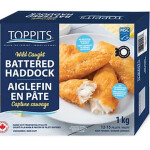Deli-prepared and frozen seafood items have shown the biggest sales gains at U.S. retail stores to start 2024, according to the “Seafood in the US Retail Q1 2024” Elanco webinar on 2 May.
For the quarter ending 31 March, frozen seafood sales by volume rose 2.9 percent year over year across U.S. retailers, as prices in the category dropped 6.3 percent.
“I’m seeing multiple categories … where frozen is doing very well, and I think an important added factor is the increased focus on minimizing or avoiding food waste,” Roerink told SeafoodSource. “With frozen shrimp, cod, or salmon, it’s easy to take out the exact amount needed, when it’s needed.”
However, frozen sales by value declined 4.6 percent to USD 2.2 billion (EUR 2.1 billion), contributing to a trend seen across several seafood categories in Q1 2024. U.S. seafood sales at retail declined 4.2 percent year over year in the period, amounting to USD 8 billion (EUR 7.5 billion), while units dropped 2.4 percent compared to the same quarter in 2023, Roerink said, citing data from Chicago, Illinois, U.S.A.-based media company Circana.
Shelf-stable seafood sales rose 1.1 percent by value in the quarter, totaling USD 875 million (EUR 819 million), but sales by volume declined 5.2 percent, likely due to an average price hike of 1.3 percent in the category. Fresh seafood prices decreased 1.7 percent in the quarter, yet sales still dropped 6.2 percent by value to USD 2.1 billion (EUR 2 billion) and 4.2 percent by volume.
Even with fresh seafood prices dropping in the quarter, average prices remain high for consumers at around USD 9.40 (EUR 8.80) per pound, which is much higher than meat prices, according to Roerink.
“Affordability remains a big hurdle. While seafood prices have declined year over year – and never saw the high inflation that chicken, beef, and others experienced – the average cost per pound remains far higher,” Roerink said.
Declining rates of seafood purchasing frequency are also affecting U.S. fresh seafood sales, she said.
“When you don’t routinely buy items, you tend to forget about them. Think about picking up chicken breast or ground beef, for instance. Many people buy these items regardless of whether they have a specific meal in mind. That wouldn’t be the case for most seafood,” Roerink said.
Roerink said 43 percent of Americans purchased restaurant meals less often in the first quarter of the year, compared to just 18 percent who ate out more often, while home-prepared meals accounted for almost 80 percent of all meals eaten by U.S. consumers in Q1 2024. The trend led deli-prepared food sales at grocery stores to shoot up 4.3 percent year over year to USD 7.5 billion (EUR 7 billion).
This follows a larger trend seen over the past few years of ...








